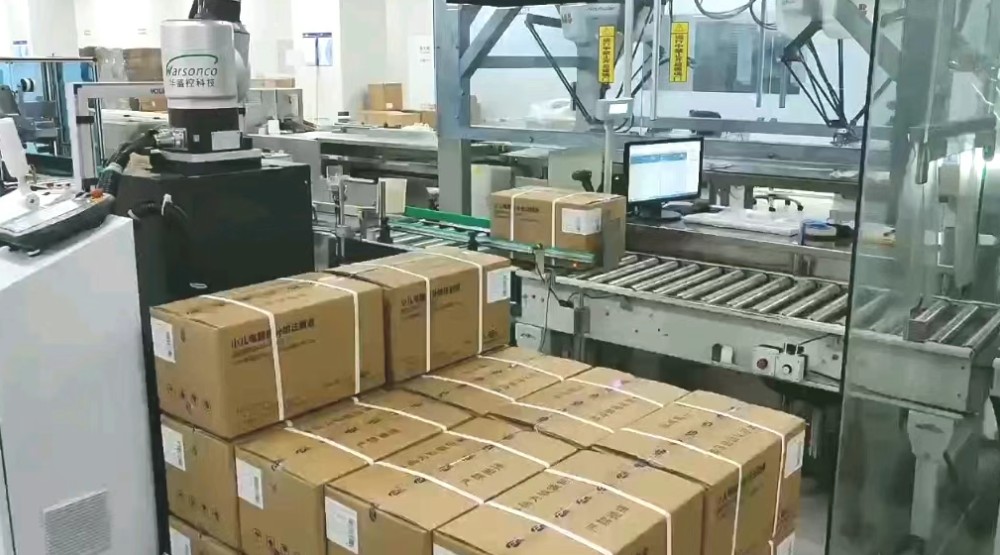On the grand stage of modern industrial production, efficiency and quality have always been the core goals pursued by enterprises. With the rapid development of technology, the traditional human palletization method has gradually revealed many disadvantages such as inefficiency and high labor intensity, which is difficult to meet the needs of large-scale and high-intensity production. Against this background, industrial palletizing robots emerged. With their efficient, accurate and stable characteristics, they have become an ideal solution for achieving automated palletizing in industrial production, bringing new production changes to enterprises.

The efficiency of industrial palletizing robots is reflected in many aspects. From a speed perspective, it can continuously perform palletizing operations at a rhythm that is far beyond manpower. In some large logistics warehouses or production workshops, traditional manual palletization may complete the stacking of up to a few hundred pieces of goods a day, while industrial palletization robots can complete hundreds or even more pieces per hour, which greatly shortens the processing time of goods and improves the operation efficiency of the entire production process. Moreover, it is not affected by factors such as fatigue and emotions, and can work continuously 24 hours a day, achieving continuous production and efficientness for the company.
Accuracy is also a major advantage of industrial palletizing robots. During the palletization process, it can accurately place the goods in a designated position to ensure neat and stable placement. Through advanced sensors and control systems, the robot can accurately identify and judge the size, weight, shape, etc. of the goods, and conduct reasonable palletization planning according to preset procedures. This not only avoids the possible problems of cargo tilt and collapse caused by manual palletization, but also improves the space utilization rate of the warehouse, making cargo storage more orderly.
Industrial palletizing robots also have high flexibility. It can quickly adjust the palletization method and procedures according to different production needs and cargo characteristics. Whether it is cartons of different specifications, bagged goods, or parts of different shapes, robots can easily deal with it. By replacing different end effectors such as suction cups, grippers, etc., it can be adapted to various types of cargo grabbing and placing. Robots can also flexibly move and work in different work scenarios, such as beside production lines and inside warehouses, providing enterprises with more diverse palletizing solutions.
Industrial palletizing robots also perform well in terms of safety performance. It is equipped with a variety of safety protection devices, such as light curtain sensors, collision detection devices, etc., which can monitor the surrounding environment in real time. Once an abnormal situation is detected, it will stop operating immediately to avoid causing harm to personnel and equipment. The operation and maintenance of robots have strict safety regulations and procedures, ensuring the personal safety of operators.
For enterprises, the introduction of industrial palletizing robots can also bring significant economic benefits. Although buying and installing robots requires a certain amount of upfront investment, in the long run, it can greatly reduce the labor costs of the company. As labor costs continue to rise, the cost of manual palletization is getting higher and higher, and the one-time investment of robots can be shared with the cost over a longer period of time. The efficient operation of robots can also improve the production capacity and product quality of enterprises, and enhance the competitiveness of enterprises in the market.
As an efficient automation solution, industrial palletizing robots are gradually changing the traditional industrial production model. With its advantages such as efficiency, accuracy, flexibility and safety, it brings higher production efficiency, better product quality and lower costs to the enterprise. In the future industrial development, industrial palletizing robots will definitely play a more important role and promote industrial production to continue to move towards intelligence and automation. Enterprises should actively embrace this technological change, make full use of the advantages of industrial palletizing robots, enhance their core competitiveness, and be invincible in the fierce market competition.